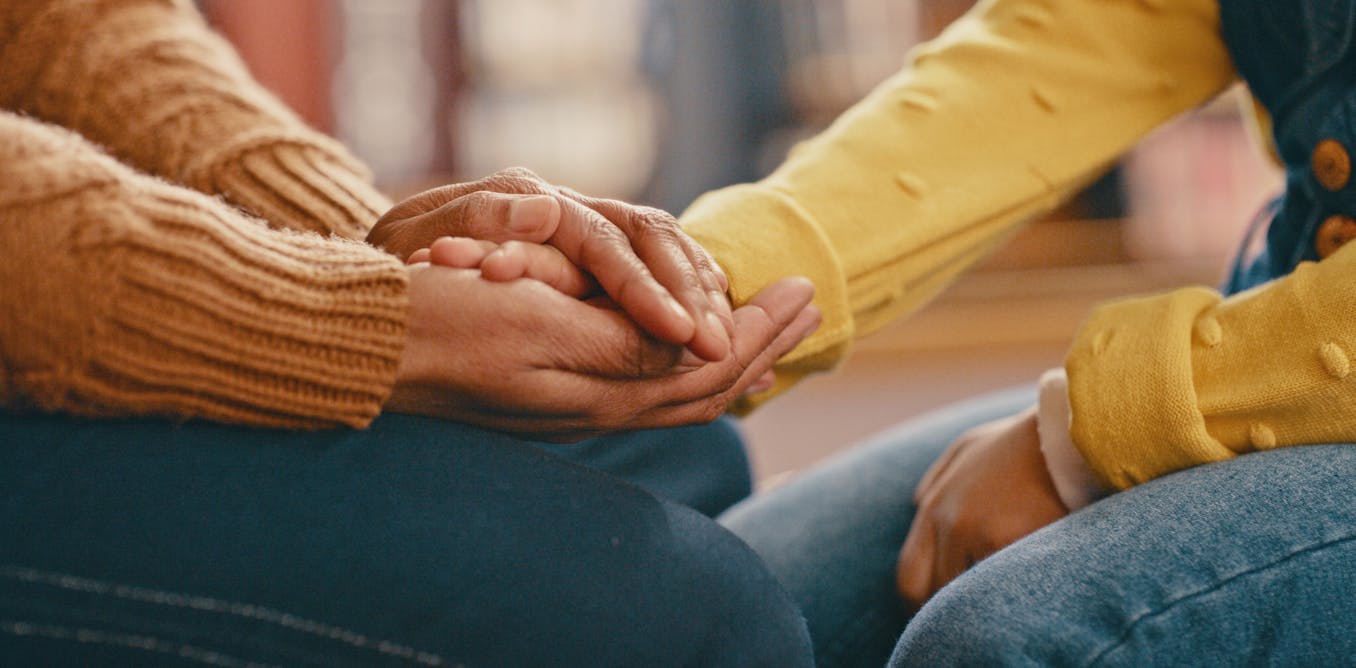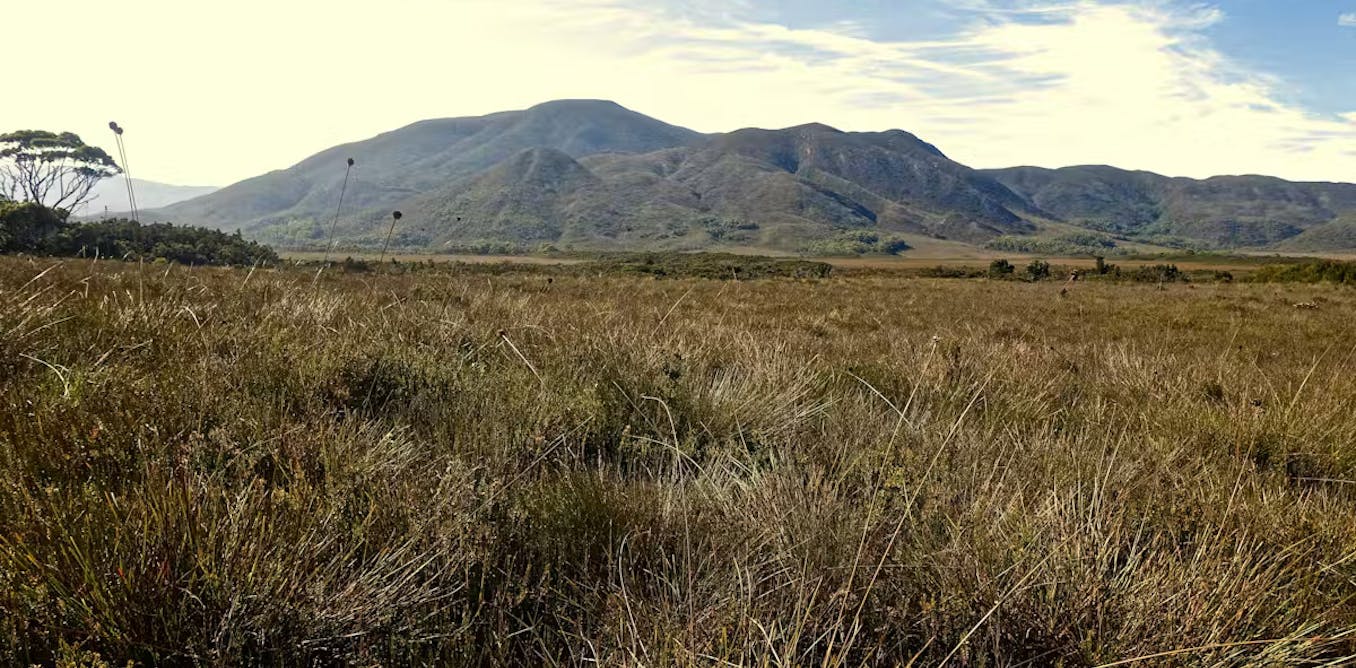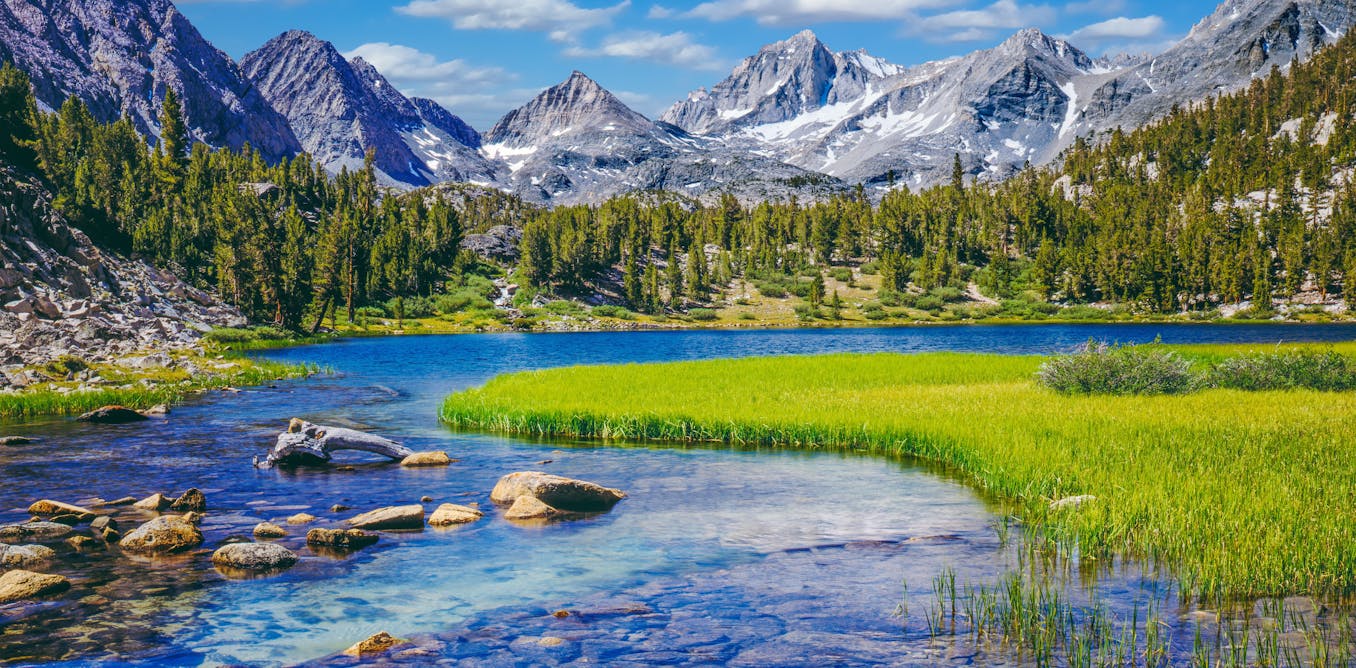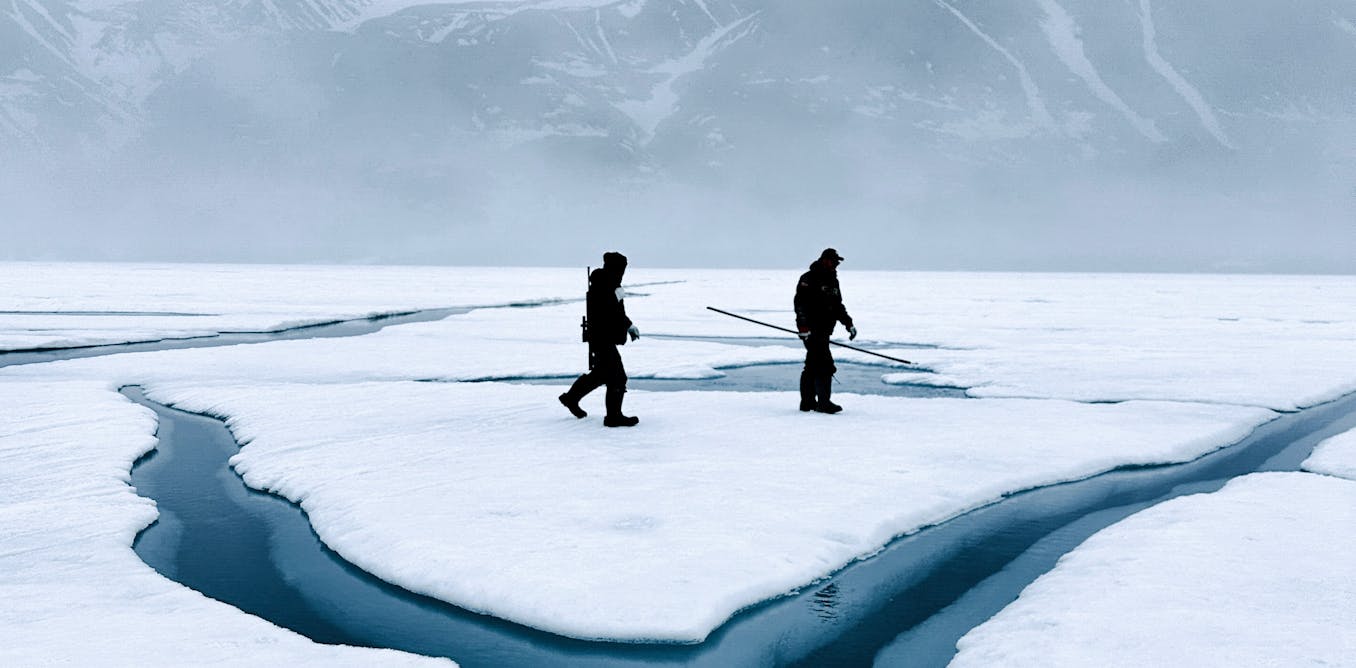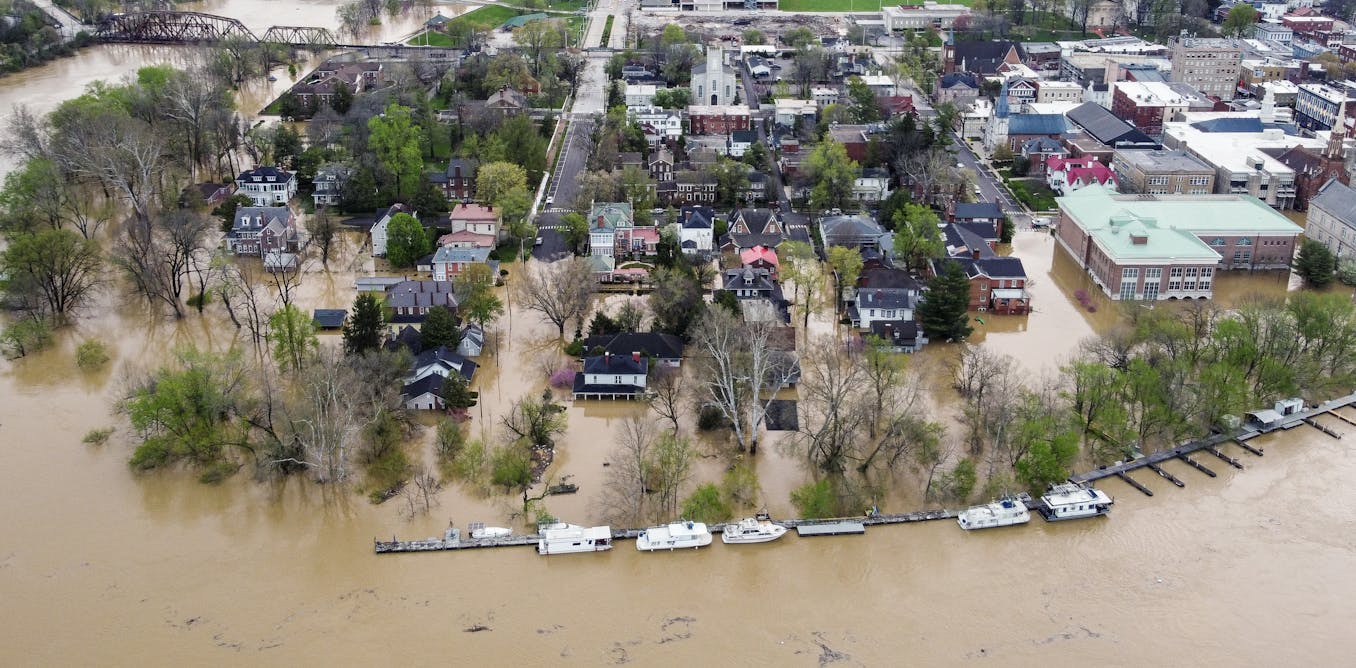When we think of climate and environmental issues such as climate-linked disasters or biodiversity loss, we don’t tend to think about gender. At first glance, it may seem irrelevant.
But a growing body of evidence demonstrates women and gender-diverse people are disproportionately vulnerable to the changing climate and the consequences it brings.
Women are 14 times more likely to die in a climate change-related disaster than men. Women represent 80% of people displaced by extreme weather.
Although extreme weather events such as fires and floods might appear to affect everyone equally, the evidence shows crises exploit existing social faultlines. This means people who are already socially marginalised suffer exacerbated impacts.
What does this look like?
Women are acutely impacted by environmental crises because they experience pre-existing social and economic disadvantage. Another reason is they tend to take responsibility for caring for other vulnerable groups, such as children or older people.
In a meta-analysis of 130 studies, 68% found women were more impacted by climate-linked health issues than men. Maternal and perinatal health is particularly effected by climate change hazards such as extreme heat. So too is the health of older women.
FAZRY ISMAIL/EPA
Most disturbingly, studies across Australia and around the world have revealed gender-based violence consistently increases during and after disasters. Both the most recent National Plan to End Violence against Women and Children and the associated Aboriginal and Torres Strait Islander Action Plan briefly recognise this. Even still, policymakers and service providers are yet to comprehensively grapple with what this means for women in an era of multiple and compounding disasters.
The impact of climate change on housing and living is also experienced in gendered ways. The Climate Council estimates that by 2030, 520,940 Australian properties, or one in every 25, will be “high-risk” and uninsurable. Rising costs of living, homelessness and under-insured housing are all affecting Australian women, who are particularly vulnerable to losing food security and shelter.
Over 2016–21, men’s homelessness increased by 1.6% while women’s increased by just over 10%. The Australian housing crisis is being exacerbated by the climate crisis, and these impacts are distinctly gendered.
Leadership drives results
Research demonstrates women and gender-diverse people bring crucial perspectives and leadership to tackling these problems. They’re not just helpless victims.
Evidence from across a range of sectors demonstrates gender-diverse leadership results in more effective and equitable approaches. Larger numbers of women in politics and policy-making results in stronger climate action policies, more ambitious climate targets and more pro-environmental legislation. Despite this, at the COP28 climate talks in 2023, only 15 out of 140 speakers were women. Only 38% of party delegation members were women.
Gender diversity in industry leadership also yields environmental benefits. Research by the World Economic Forum shows that a 1% increase in women managers in a company results in a 0.5% decrease in carbon emissions. Boards with higher gender diversity receive higher scores on Environmental, Social and Governance (ESG) performance measures and have fewer environmental lawsuits.
Companies with more than 30% women on their boards display better climate governance, climate innovation and sustainability performance. Yet, as of 2022, women hold just one in four executive leadership positions in ASX300 companies. At the current rate of progress, it will take a century for women to constitute 40% of chief executives among ASX200 companies.
Women and gender-diverse people are also in the minority in renewable energy industries. Only around 35% of the clean energy workforce is female. These women are predominantly in jobs such as office administration, accounting and cleaning, rather than trade-qualified or engineering roles.
In the recent federal budget, the government announced $55.6 million for a Building Women’s Careers Program. It also pledged $38.2 million to increase diversity in Science, Technology, Engineering and Mathematics (STEM) education and industries. These are welcome developments.
But gender inclusion and equity need to be centred in major initiates like the Future Made in Australia Plan and the Net Zero Plan. This would help achieve urgent climate change mitigation targets and to ensure the associated economic benefits are genuinely inclusive.
Deep social change will be required to adequately address these issues. This is not just a matter of making space for more women to take up leadership positions, but requires grappling with the fact gendered social and economic inequality is caused by discriminatory gender attitudes, leaving women and gender-diverse people vulnerable to environmental impacts. Moreover, the kind of unpaid care work so often performed by women has been systematically undervalued, but is foundational to our economy, society and environment.
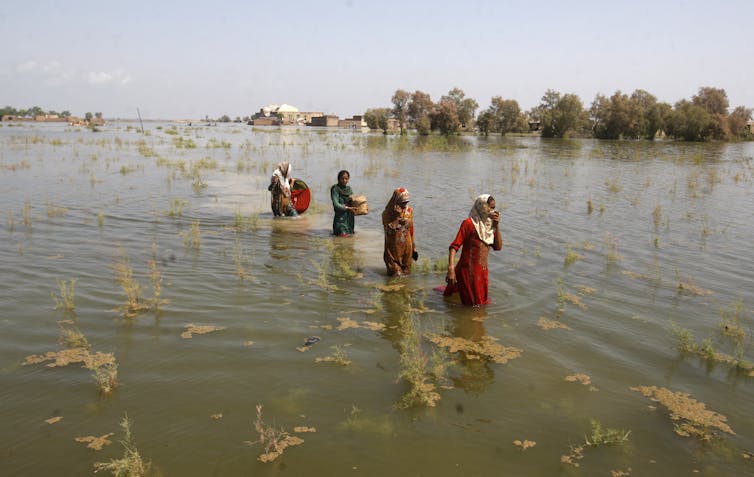
Fareed Khan/AP
Fuelling disaster recovery
Women also have a key role to play in preparing for and recovering from climate-fuelled disasters.
Research shows women tend to take on emotional and relational roles within communities, sustaining networks of care at the local level. Community-level care is crucial to helping local communities stay strong in the face of increasing disasters, the impacts of which often exceed the capacity of emergency responders. Our disaster response policies and agencies need to recognise the often gendered nature of community resilience work and deliberately support this kind of “soft infrastructure”.
Climate and environmental issues do not affect us all equally. Women and gender-diverse people are acutely affected. We need targeted policy responses that recognise this vulnerability. In addition, women and gender-diverse people offer distinctive and much-needed leadership styles. These approaches are urgently required if we are to rapidly transition to a renewable economy.
The gendered impact of climate change is well-recognised at the international level, including by the United Nations. Australia has ambitions to host the COP31 global climate change conference with our Pacific neighbours in 2026. To be in the running, Australia needs to demonstrate it recognises and takes seriously the gendered nature of climate and environmental issues.

The post “Women are 14 times more likely to die in a climate disaster than men. It’s just one way climate change is gendered” by Carla Pascoe Leahy, Adjunct Researcher, University of Tasmania was published on 05/30/2024 by theconversation.com









